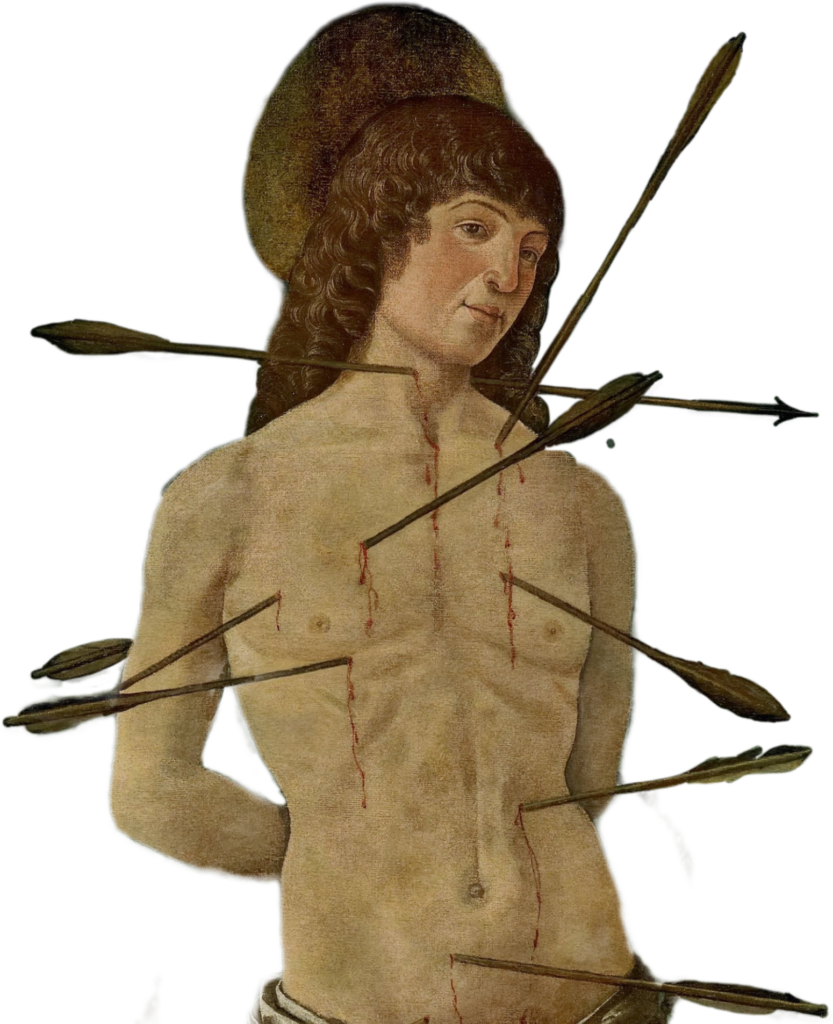Apostles’ Paul and Thomas

The martyrdom of Saint Paul and the condemnation of Saint Peter, Giovanni Jacopo Caraglio, after Parmigianino, 1525 – 1527, engraving RP-P-2015-61-1
Saint Paul (also known as Saul of Tarsus) was a Roman general tasked with arresting and persecuting Christian worshippers. According to the Acts of the Apostles, he was journeying to Damascus when he was overwhelmed by a divine light, which chastised Paul for his actions and blinded him. After three days, his vision was restored by Ananias of Damascus, whom God sent to heal Paul.
Following this incident, Paul was baptised and went on to preach in the many synagogues of Damascus. Paul then travelled to Jerusalem, where he sought out Jesus and his disciples to join their mission. Paul would go on to write at least seven of the books in the New Testament. He was imprisoned and ultimately executed for his Christianity on the order of Emperor Nero. Paul was beheaded on the same day that his fellow apostle, Saint Peter, was crucified.

Self-portrait as the Apostle Paul, Rembrandt van Rijn, 1661, oil on canvas SK-A-4050
At the age of 55, the Dutch Golden Age painter Rembrandt created a portrait of himself as Saint Paul. Look closely and you can see the symbols of the saint: the hilt of a sword, which alludes to his martyrdom, and the stacks of papers, referencing Paul’s role as an evangelist. There is a mysterious light source in this portrait. Maybe it is the divine light Paul saw before his conversion to Christianity, or maybe it is daylight, streaming in from a high window in the cell where Paul was imprisoned for his faith. Paul’s expression appears resigned, perhaps he has accepted his imminent martyrdom.
By representing Paul as an average-looking, middle-aged man, Rembrandt humanises the saint in this self-portrait. The viewer can connect with him on a personal level, demystifying the world of the divine and making his martyrdom even more poignant.

St Paul of the Thorns, Elizabeth Tooth, 2022, Oil on canvas, image courtesy of the artist
In ‘St Paul of the Thorns’, the artist Elizabeth Tooth portrays her husband, who suffers from a disabling pain condition, as Saint Paul. The work references Paul’s ‘thorn in the flesh’, which afflicted him after his divine encounter. We will never know what this thorn actually was, suffice to say it caused Paul a great deal of pain for the rest of his life.
Tooth’s painting explores conceptions of masculinity, strength and vulnerability, and has sparked discussions around the reality of hidden disabilities. Whilst Paul’s left arm and leg are encircled by branches, he chooses to grab hold of the thorns with his right hand. What lessons might we take from this image, when we think about our own painful predicaments? Are some things worth the inevitable hurt they cause us?
‘For when I am weak, then I am strong.’ – 2 Corinthians 12:10
Martyrdom of the Apostle Thomas, Jacob Neefs (After Peter Paul Rubens), 1620-1680, engraving RP-P-OB-67.968


The Incredulity of Thomas, Hendrick ter Brugghen, c. 1622, oil on canvas SK-A-3908
Thomas the Apostle was one of the twelve followers of Jesus Christ and played a vital role during his death and resurrection.
When Jesus first appeared to his disciples after rising from the dead, Thomas was not present. He remained distrustful of the news, even upon seeing Jesus for himself. His scepticism was only cast aside when Jesus invited Thomas to feel his wounds. Thomas placed his finger into the laceration under Jesus’ chest that was left by the Roman soldiers’ final blow. This gesture foreshadowed Thomas’s eventual martyrdom; in 72 AD he would be stabbed in that same spot by soldiers in Chennai, India.
This painting showcases the moment Thomas touched Jesus’ wound. Inspired by Caravaggio’s painting on the same subject, artist Hendrick Te Brugghen reduced the number of figures and placed the wound in the centre light source. These changes draw the eye to Christ’s determined grip and the apprehensive hands of the man cloaked in yellow. Brugghen created a scene that feels human, bridging the gap between the divine and the earthly.
Doubting Thomas, Ian Stone (2023) oil on linen, image courtesy of the artist
In ‘Doubting Thomas’, artist Ian Stone retells the moment that Thomas feels Jesus’ wounds from a transgender perspective. Much of Stone’s oeuvre explores the queer experience. Here, he transforms Jesus’ side wound into healed scars from top surgery, a key moment in the transition of many transmasculine people. Thomas’ disbelief becomes the dismissal of being trans as a phase or fad. Stone has written that he chose to work in realism since it ‘is as real as trans people have always been’.
By depicting the moment in which Thomas’ mind is changed, the painting offers a message of hope. Reinterpreting religious iconography can be a powerful tool of reclamation for many queer people who have experienced ostracisation from their faiths and communities.


